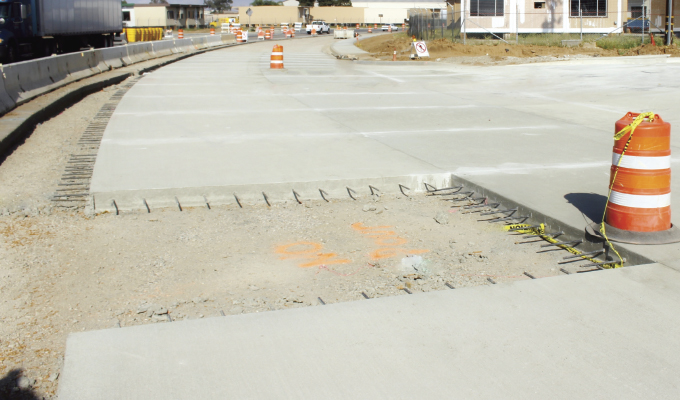There is an overwhelming opportunity among the architecture, engineering, and construction (AEC) industry to reduce the carbon footprint of our built environment. The built environment is responsible for 40% of total global emissions annually, with construction materials accounting for 13% of that. One such material is so widely used but also has a staggering impact on the environment: concrete. But what makes this material have such high emissions?
According to Architecture 2030, concrete is responsible for 11% of total global emissions, with 90% of those emissions coming directly from the cement content itself. Within the AEC sector, designers, manufacturers, and contractors are growing increasingly aware of the material’s impact on the environment, exploring and investing in various methods to help reduce its emissions.
Here’s how the AEC industry can help decarbonize concrete to reach climate goals:
1. USE CONCRETE MIXES WITH LOWER CEMENT CONTENT
Due to prescriptive requirements and a tendency for large safety margins, the construction industry has a history of over-cementing concrete, which has caused significantly higher emissions of the material. One concrete carbon reduction strategy is mixture design optimization. If performance specifications allow for it, significantly lower quantities of cement can often be used to achieve strength and durability requirements for the application. In addition, substituting ordinary Portland cement (OPC) with supplementary cementitious materials (SCMs), including fly ash, blast-furnace slag, and natural pozzolans, is a great place to start. This way, concrete maintains its performance while reducing its emissions.
2. CONSIDER CONCRETES WITH “ALTERNATIVE” CEMENT
Another method to decarbonize concrete is to utilize “alternative” cement options. The most widely known alternative is Portland-limestone cement (PLC), which was developed in direct response to growing interest from the sector to reduce the embodied carbon emissions associated with OPC. Using PLC can lower the carbon footprint of concrete by 10% on average.
Additionally, like any industry facing a widespread issue, various startups and organizations have recently emerged, offering innovative alternatives to OPC. Brimstone is an example of one of these cutting-edge companies, creating a carbon negative Portland cement with carbon-free calcium silicate rock instead of limestone. Prometheus is another example, working to create a zero-carbon bio-concrete combining microalgae and other natural components.
Concrete innovations like those pioneered by Brimstone and Prometheus are not yet readily available to the public but are exciting options for the AEC industry to look forward to.
3. ASK FOR ENVIRONMENTAL PRODUCT DECLARATIONS (EPDs)
One method for decarbonizing the concrete sector lies directly in the hands of contractors. Because contractors are in communication with their manufacturers and suppliers on a daily basis, it is up to them to understand what materials they are specifying for a given project and their impact. EPDs demonstrate to contractors the carbon impact of a material to help them make more informed decisions when considering the overall emissions of a building project.
Understanding EPDs is a win-win for contractors and suppliers alike, as it encourages suppliers to create EPDs for their products (including cement/concrete) and enables contractors to make comparisons between the concrete mixes available to them so that they can choose one with a lower impact.
CLOSING THOUGHT
Concrete is the second most used substance in the world, so it is imperative that the AEC industry continues to make strides toward decarbonizing the material in order to meet climate goals. Luckily, industry leaders are taking notice of the opportunity to educate designers, manufacturers and contractors on concrete’s carbon impact, meeting them where they are on their “embodied carbon journey” to help them understand steps to take during material specification, how to read an EPD and the role sustainability plays in the bidding process.
About the Author:
Mikaela DeRousseau is data and methodology manager at Building Transparency, a nonprofit organization that provides open-access data and tools to foster a better building future and aid in reversing climate change. For more, visit www.buildingtransparency.org.
Modern Contractor Solutions, July 2023
Did you enjoy this article?
Subscribe to the FREE Digital Edition of Modern Contractor Solutions magazine.



